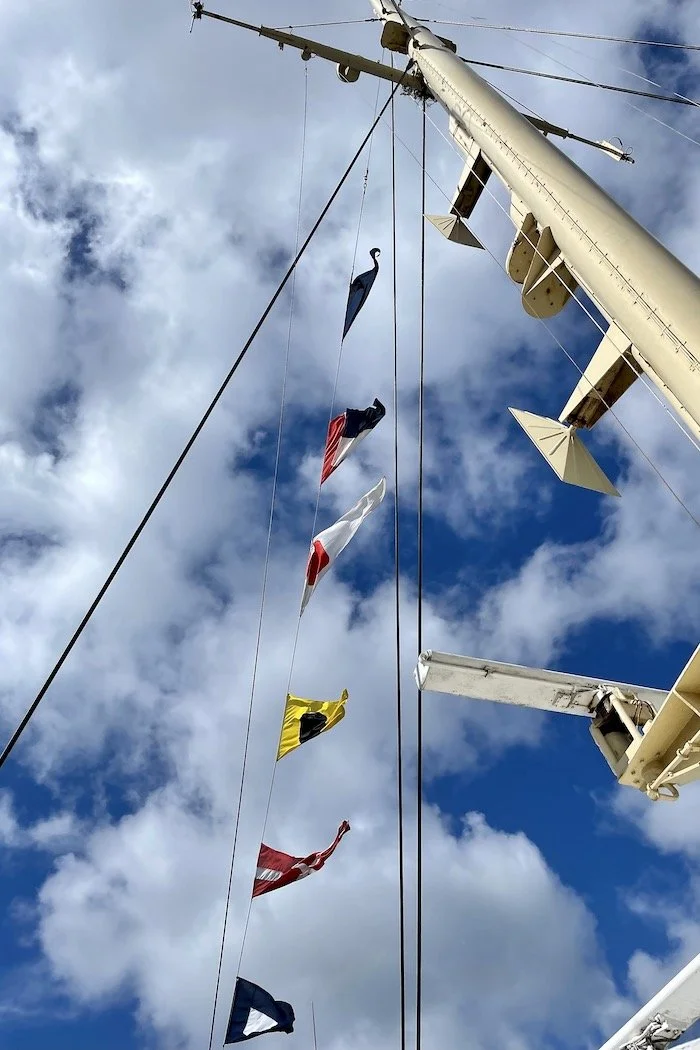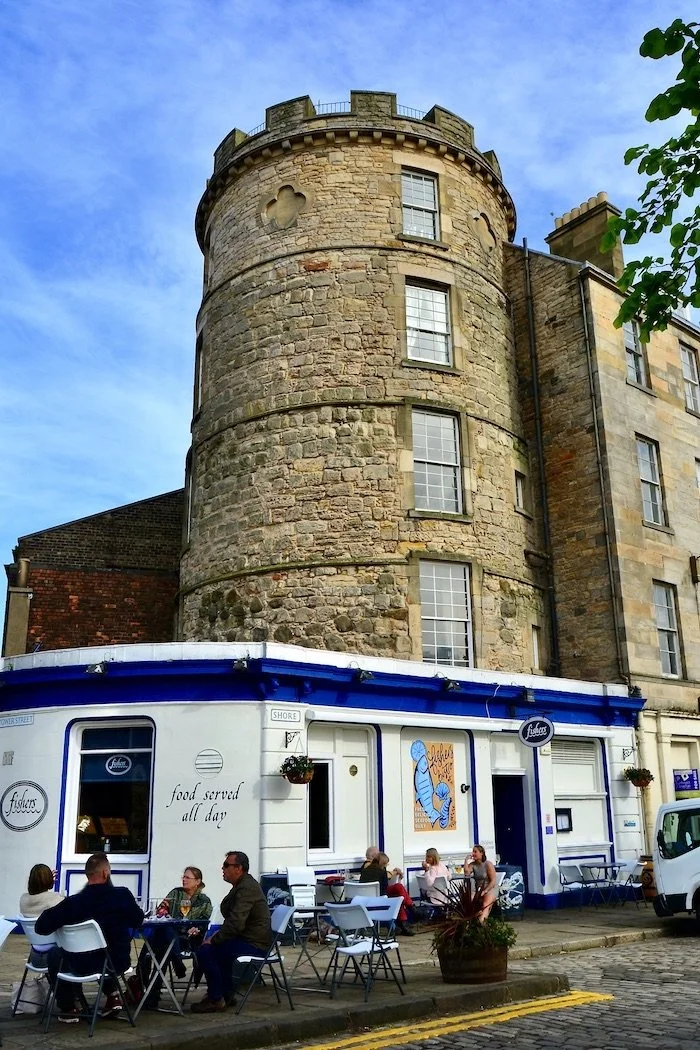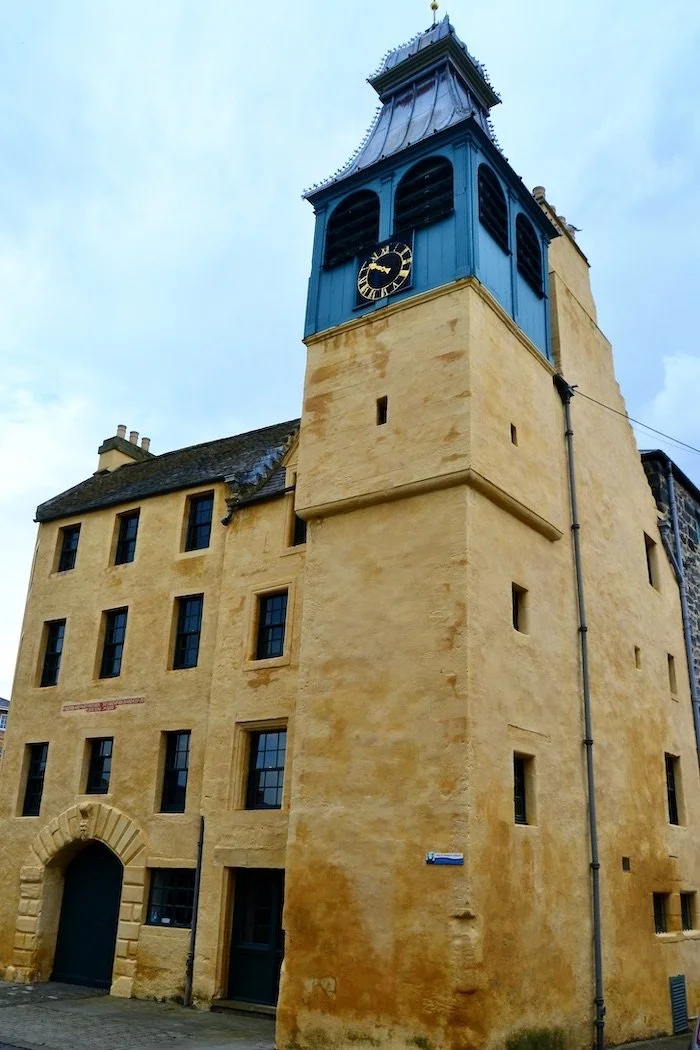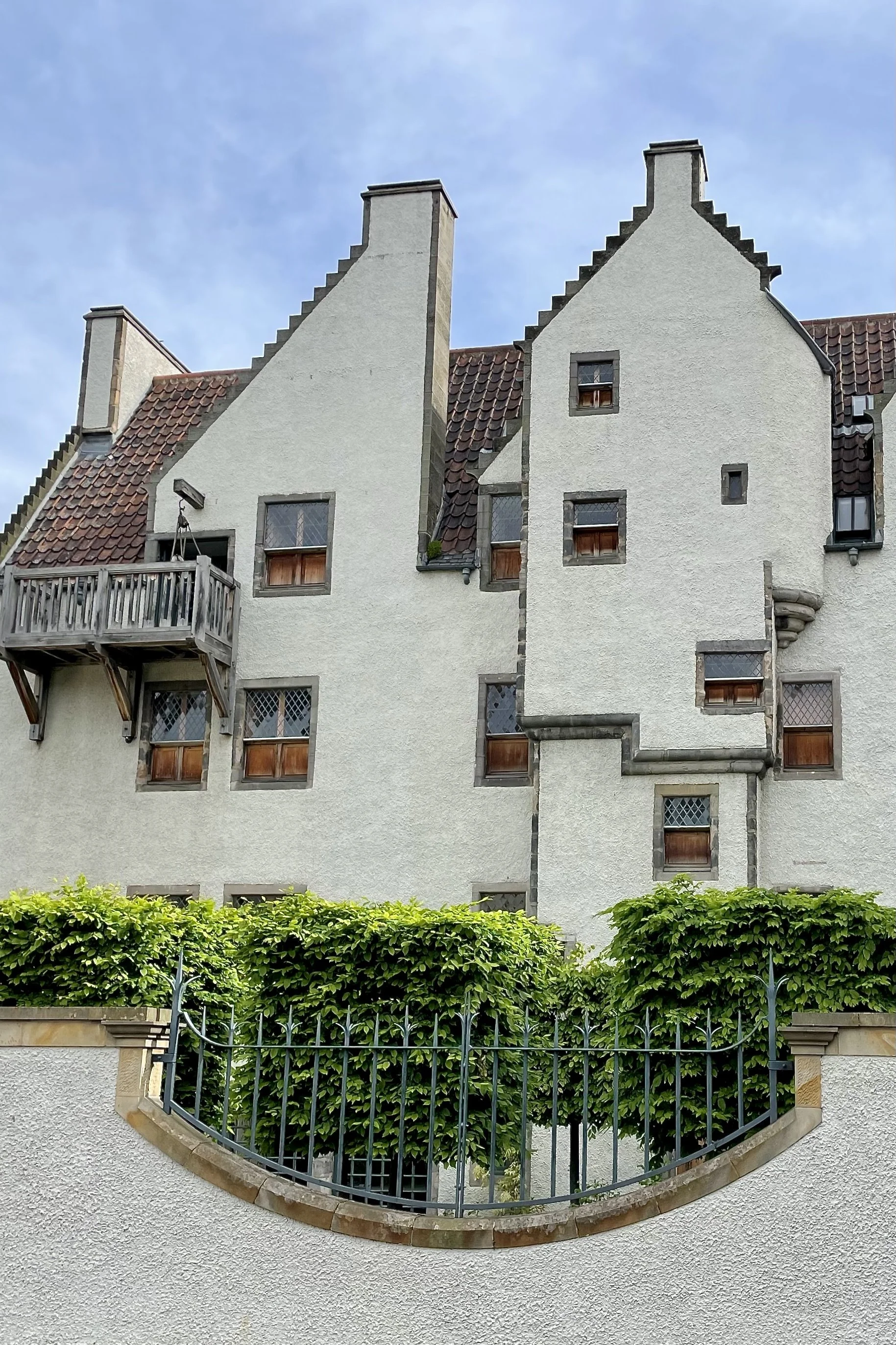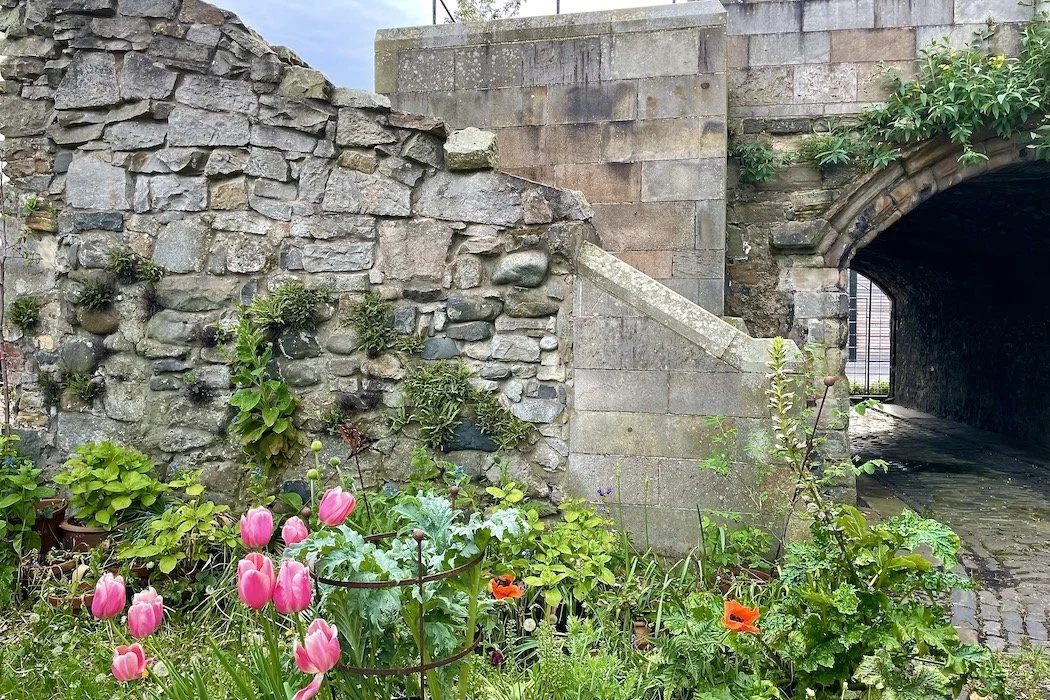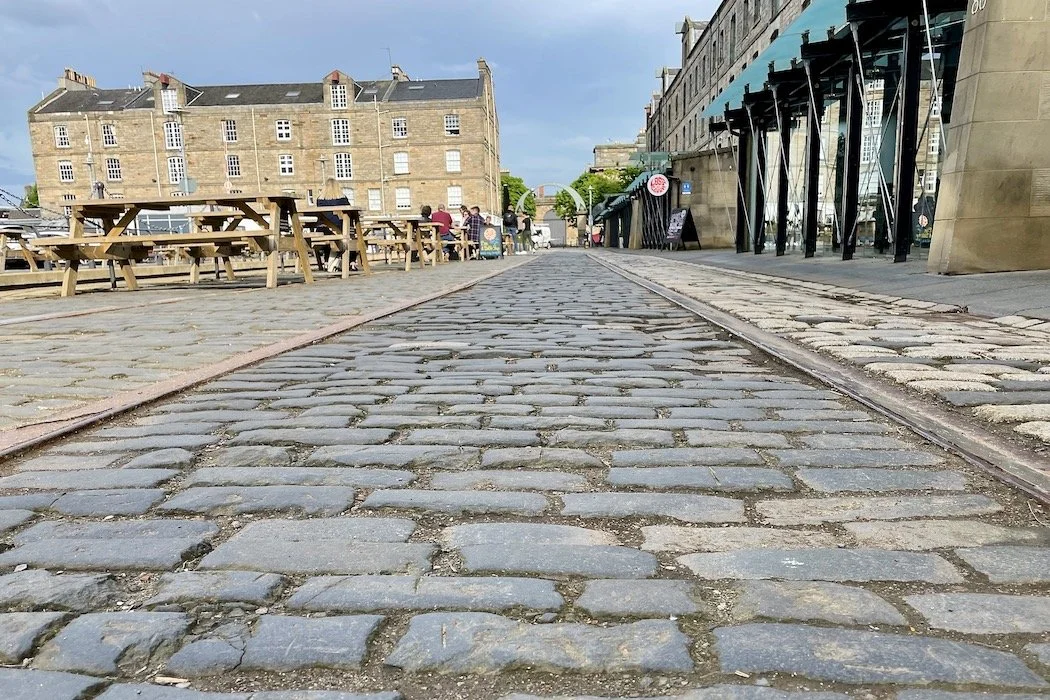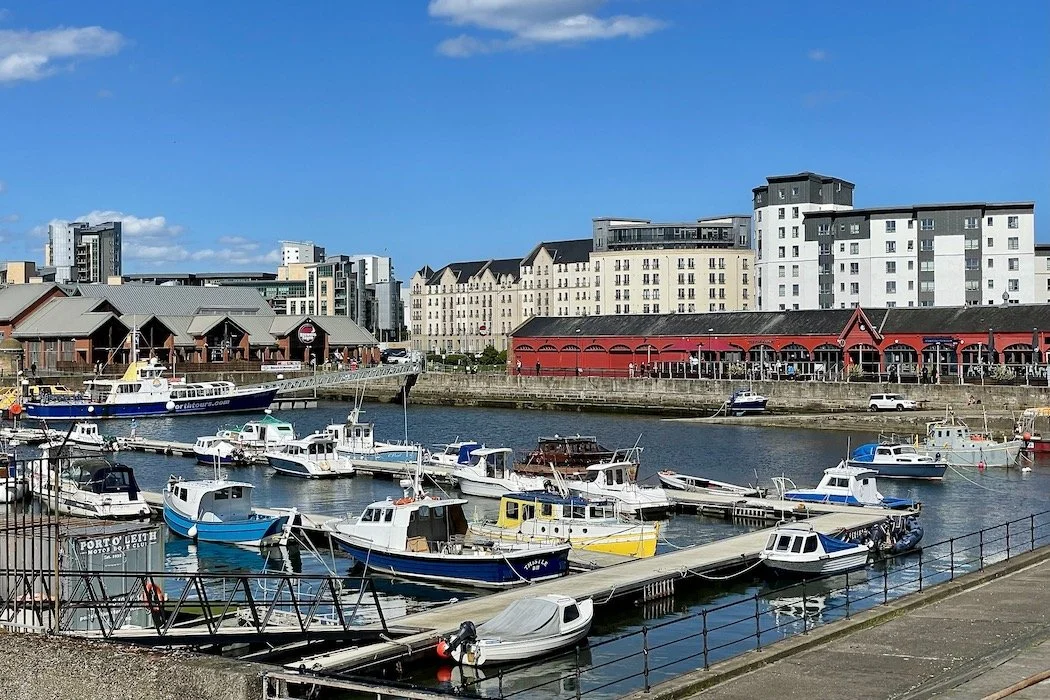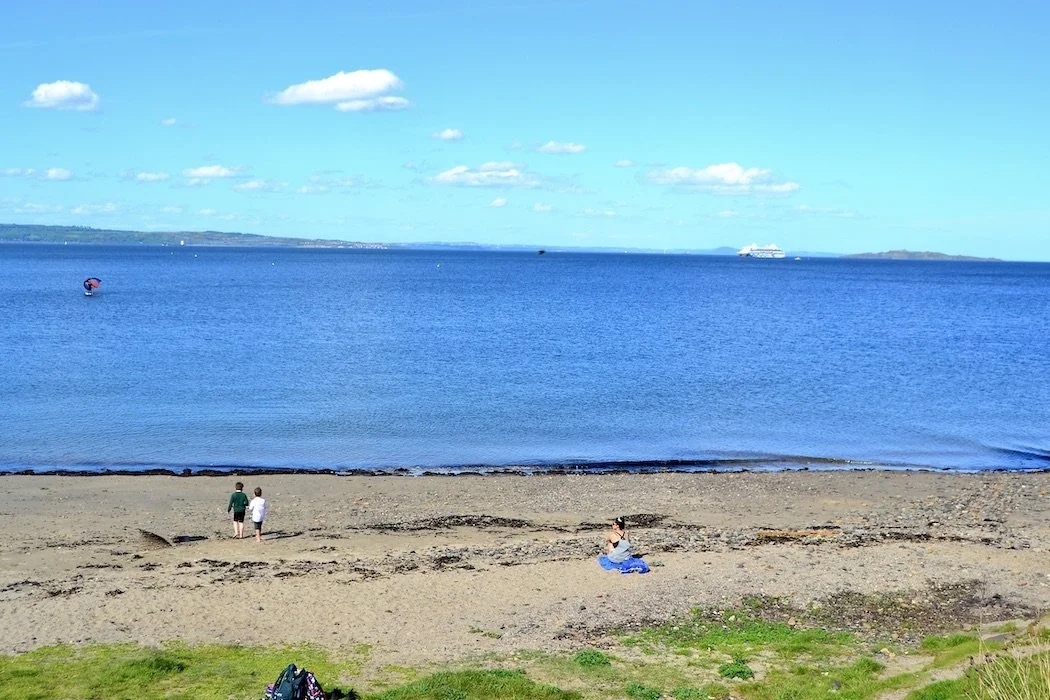Explore Low-Profile Leith
The Water of Leith river before meeting the shore
“…we have an innate need to explore, to see what’s around the next corner”—Jimmy Chin
At the mouth of The Water of Leith, the main river flowing through Edinburgh, lies the port area, at the city’s northern end. The name Leith is Brittonic, meaning damp or moist, and the earliest reference stems from an 1128 royal charter founding Holyrood Abbey and calling this land Inverlet (Inverleith). Soon wharves sprang up at the water’s edge and by the 14th century, Leith docks connected Edinburgh with the world as ships arrived carrying wine, cloth, and spices, and again sailed loaded with fish, coal, grain, and hides. Controlled by Edinburgh for centuries, Leith became proudly independent in 1833 only to be incorporated into the capital again a century later.
Originally, docks lined both sides of the river mouth at The Shore but as the city and industry expanded, the docks moved towards the natural harbor at the Forth, making Leith Scotland’s principal port for centuries. Shipbuilding began here in the 1500s, and other early industries included soap and glassmaking. Leith Glassworks specialized in wine bottles, developing the round shoulder, narrow neck bottle that dominates the wine industry. The Vaults, built in 1682 as Leith’s first warehouse, already had wine storage cellars under street level a century earlier. Roses Lime Juice also originated here, to supply sailors with all-important vitamin C. More recently, fishing, especially for herring, as well as whaling contributed to Leith’s prosperity.
Legendary Leith has played a prominent role in Scotland’s tumultuous history. Leith was a walled town at the time of the Reformation, yet Mary of Guise, the mother of Mary, Queen of Scots, managed to rule Scotland from Leith before her daughter’s arrival. Later, a defensive rampart was built from Leith to Edinburgh to repel Oliver Cromwell’s attack on the Scots army in 1649. It held only weeks but later became Leith Walk, Edinburgh’s longest street and main link to the city center. After Cromwell occupied Scotland, he built The Leith Citadel fortress to regulate port traffic, of which only a vaulted archway remains. The river historically divided Leith into north and south, each with its own church. St. Ninian’s Church, (now North Leith Parish) built by the Abbot of Holyrood in 1493, is Leith’s oldest surviving building.
The port’s decline after WWII left Leith with a reputation for gangs and prostitution, but regeneration in the last two decades has repurposed old industrial sites for affordable housing, small industry, hotels, and restaurants. Today, Leith is a low-key, cool neighborhood with a rustic character, a buzzing port district that has become home to hip creatives, some showcasing their talent in the old riverside Custom House, who thrive alongside longtime locals. Thankfully, regeneration hasn’t robbed Leith of its earthy qualities even as its coolness has awakened international notice. Along the Water of Leith Walkway, another important link to Edinburgh center, seafood bistros and historic pubs stretch down to The Shore. In Newhaven, the beach, restaurants in the old fish market, and microbreweries lure young people from other parts of the capital, and since its decommissioning in 1998, The Royal Yacht ‘Britannia’ attracts visitors to its mooring spot at The Shore.
Don’t Miss:
Strolling along the Water of Leith Walkway, the area’s lifeblood, to take in the atmosphere.
Serendipity:
Locals along the way- While reading a historic plaque at the South Leith Parish Church, the man cutting grass approaches, offers to open the church, and gives an enthusiastic impromptu tour.
Lunch Tip:
Teuchter’s Landing with its own brewery for good beer, fish, and pub fare.
Bedtime:
Malmaison, in the former Sailor’s Home, right on The Water of Leith.
Subscribe for inspiration to have my posts drop directly into your inbox. *If you enjoyed what you read, please share this post with like-minded travelers.*
*All photographs are mine, taken with my Nikon D3100 or iPhone 12 Pro.*


